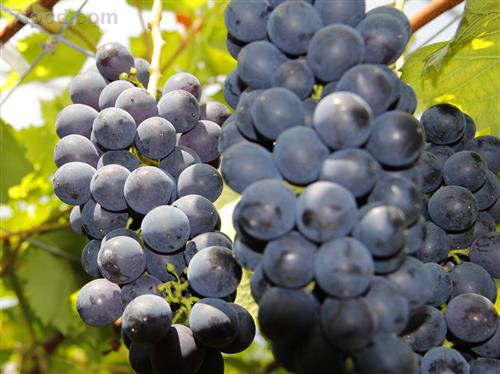Basic information of Huxian grape: Located in the central Guanzhong Plain, Hu County is a warm tropical semi-humid continental monsoon climate zone. It is characterized by cool, warm, wet and dry seasons, abundant light, heat, and water resources. It is an area suitable for agricultural production and diversification. It is known as the “Yinhu Countyâ€. Reputation. Huxian County has a long history of grape planting. The poems of the Tang Dynasty poet Wang Han “Glass Wine Nightlight Cup†spread through the ages. The grape varieties of “Houtai No. 8â€, Hongti, Hong Noble, and Xinhua No. 1 were of excellent quality, and were honored as “Hometown of China's Hutuo Grapes†and “China's Top Ten High-quality Grape Basesâ€. Special product status: After several years of development, the grape industry has become a dominant industry in Huxian County, where the crop technology and planting scale has always been a leading position in Shaanxi Province. According to statistics, the county's grape planting area has reached 11,000 acres, and the total grape output is 10 million kilograms, with an average yield of 1200 to 1,500 kilograms, and a maximum of 5,000 kilograms, and an annual output value of at least 40 million yuan. The good economic benefits helped the farmers realize their dream of increasing their income and getting rich, and they had a good taste of “one village, one productâ€. Through years of careful selection, Huxian has determined the varieties of “Huantai No. 8â€, Hongti, Hong Noble, and Xinhua No. 1 that are suitable for planting in the local area, basically forming the early-maturing varieties in the west and the middle-late-maturing varieties in the east. With the relatively reasonable variety of the main plant, the planting area, yield and quality of the grapes have been improved year by year. Quality features: 1. Sensory features: The ears are neat, fruit powder is thick, the skin is thick, the top is purple-black, the tail is purple, the flesh is fine and brittle, there is no meat sac, sweet and sour, and it has unique aroma of jujube. 2. Physical and chemical indicators: Soluble solids ≥18%, total acid 0.45% to 0.50%. 3. Safety and other quality and technical requirements: Product safety and other quality and technical requirements must comply with relevant national regulations. Planting requirements: Climate: Most of the world's vineyards are concentrated in the temperate zone between 38 and 53 degrees north and south latitude. The cold climate will make the grapes unable to achieve the desired maturity, and the vines can hardly withstand the cold winter. An overheated climate will make the grapes ripe and fast, and the resulting wine will be bland. Sunshine: Grapes need sufficient sunlight, carbon dioxide and water to produce photosynthesis, and the resulting carbohydrates provide nutrients for grape growth and are also sources of sugar in grapes. The vine does not need strong sunlight, and weaker light is more suitable for photosynthesis. Sunlit grapes can deepen the color and increase the taste and quality. Temperature: The grapes begin to germinate and require temperatures above 10 degrees Celsius. Below the freezing point, the grapes will freeze fresh buds. 22-25 degrees is more suitable for the growth of branches and leaves, and after the harvest, the temperature has little effect, but it is necessary to prevent freeze-dried grape leaves and roots below 15 degrees C. Water: Grapes need more water in the growth stage, and dry weather in the mature stage. Water and rainfall are related, but underground soil drainage also affects the water intake of the vines. Soil quality: The vine does not need too much nutrients, so the barren land is particularly suitable for the cultivation of the grapes; too fertile land will make the vines grow branches and leaves without producing high-quality fruit. In addition, soil drainage, acidity, soil depth, and even color can all affect wine quality and character. The common soil in the vineyard is: 1. Granite soil: mostly sand or fine stone, good drainage, is an acidic soil. 2. Sedimentary rock: It contains a large amount of limestone, which is divided into Jurassic marl, lime clay, lime soil and so on. 3. Gravel and pebble land: It is an alluvial landform that was developed in the recent past. It has less nutrients, high drainage and absorbs sunlight, and raises temperature. Shenzhen Zuomi Technology Co., Ltd. , https://www.leftriceptz.com
Huxian grape